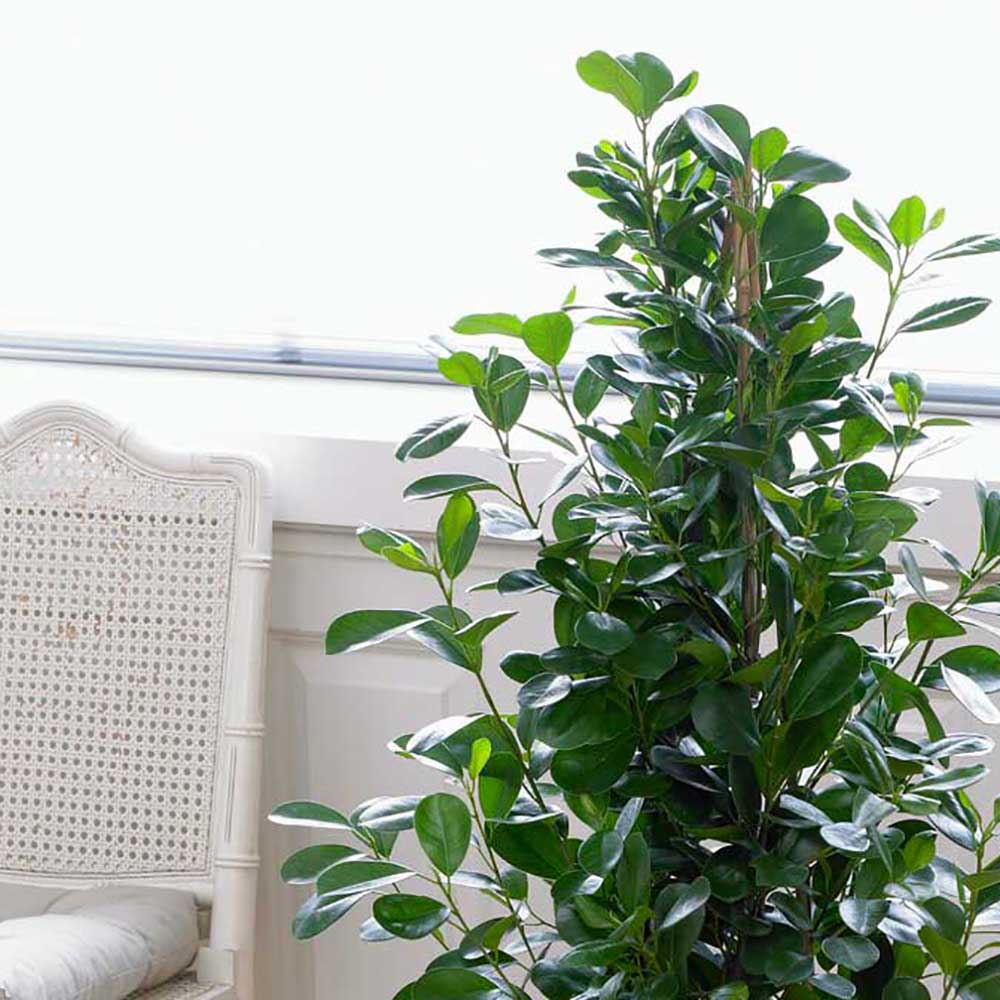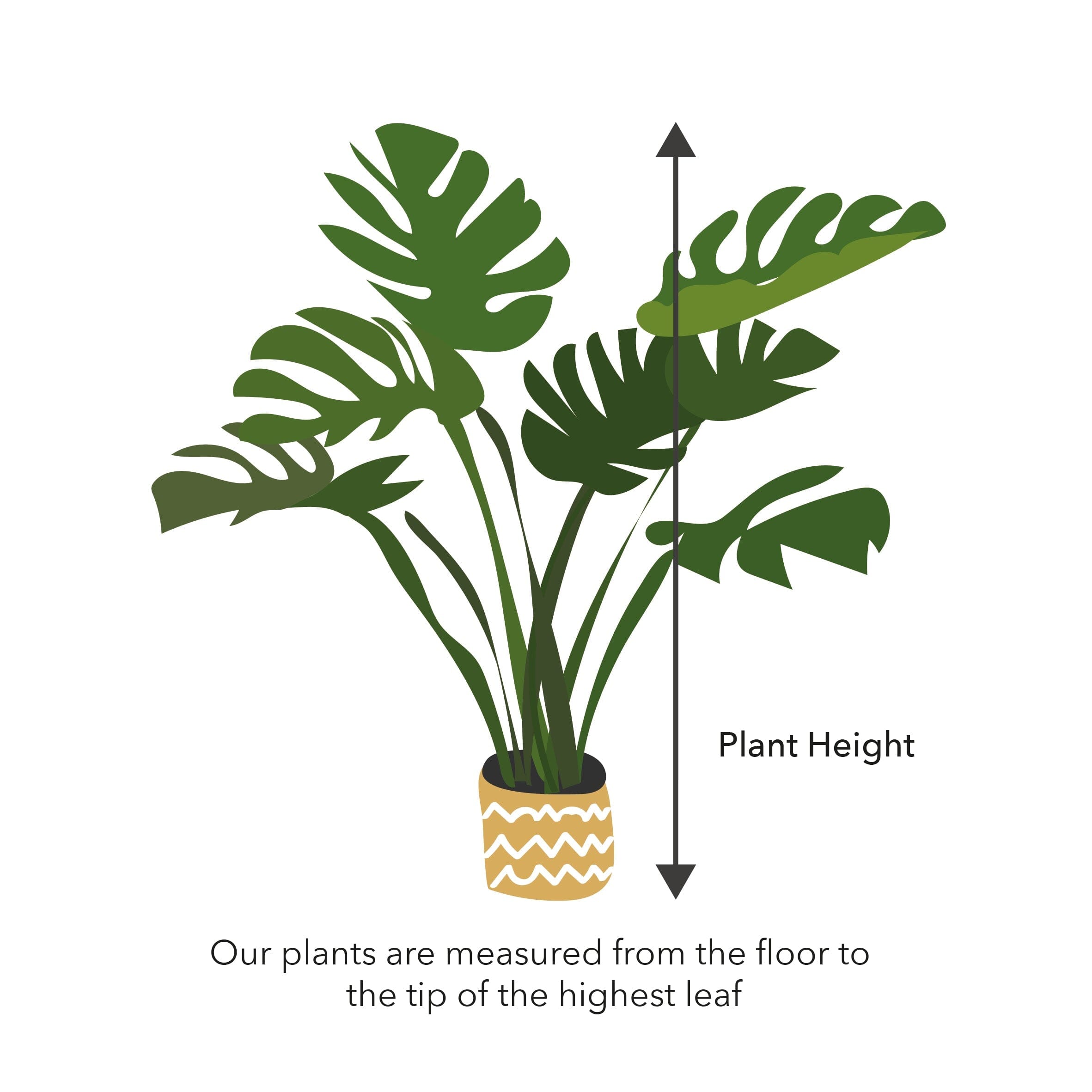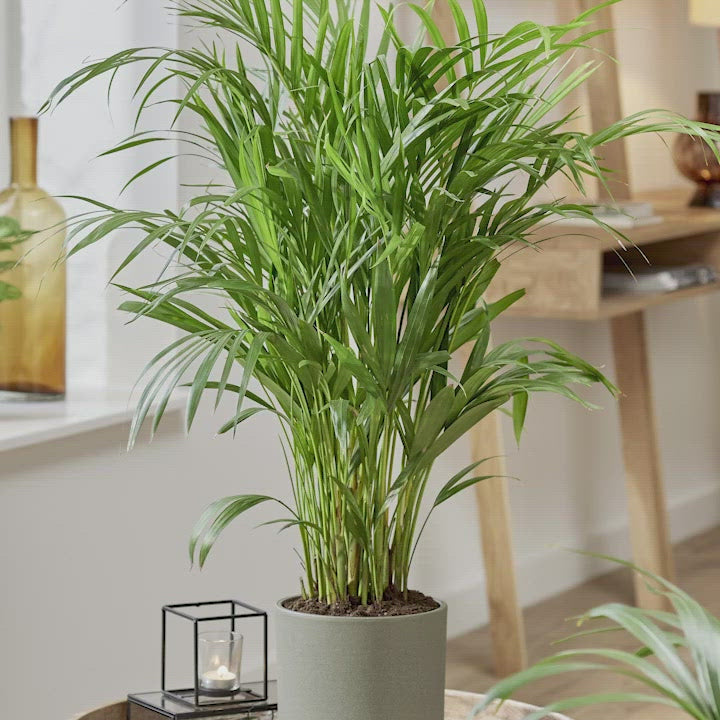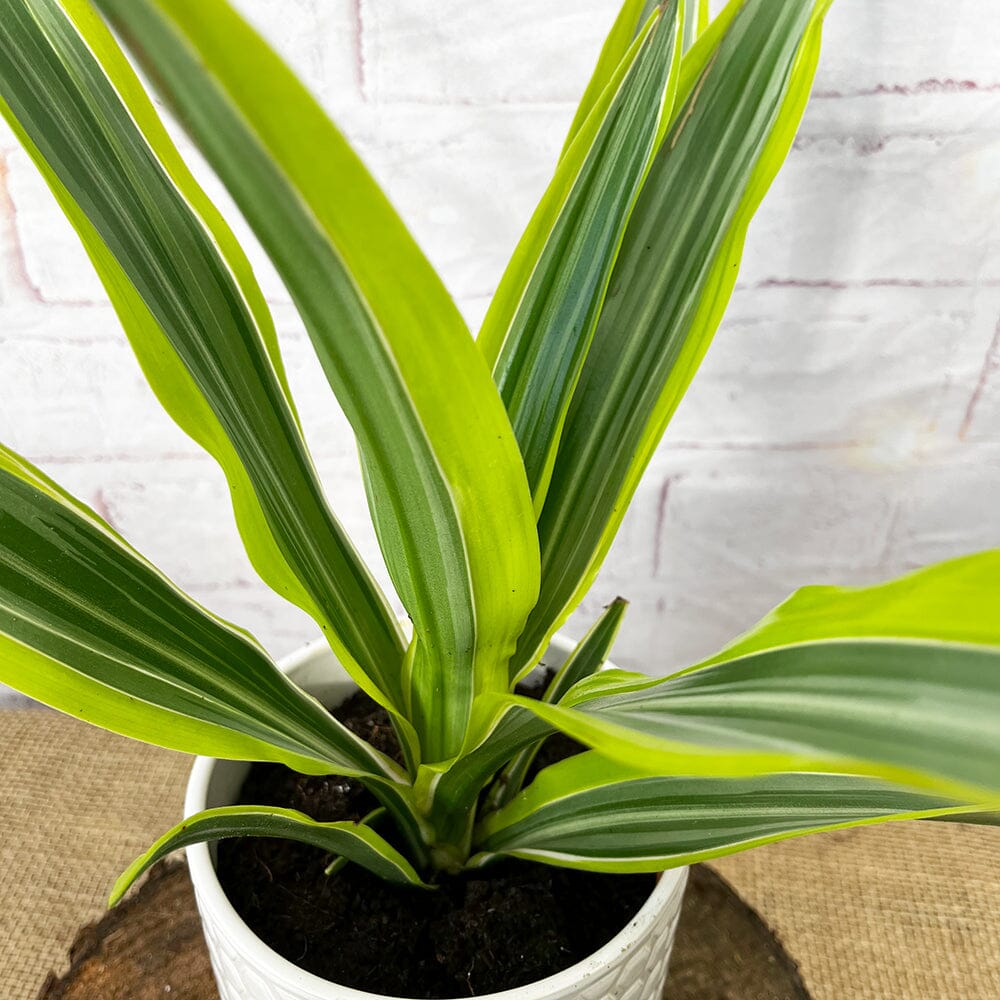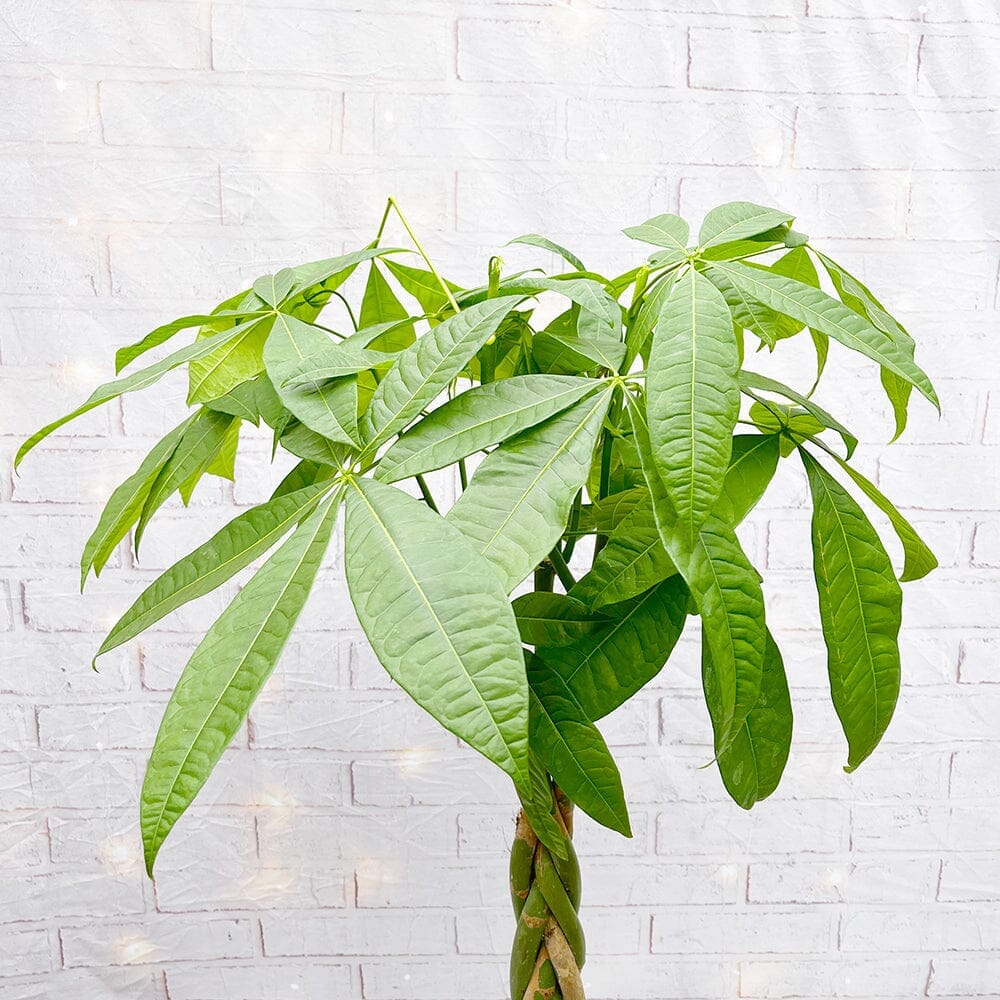Hosta Wide Brim Aquatic Pond Plant - Plantain Lily
Hosta 'Wide Brim' is a popular cultivar known for its large, heart-shaped leaves with attractive variegation. The plant forms a dense mound of foliage with a mature height of about 16 to 20 inches (40-50 cm) and a spread of 36 to 48 inches (90-120 cm). The leaves have a glossy texture and feature a bright green center surrounded by a wide, irregular margin of creamy yellow or ivory. The variegation adds a striking contrast to the foliage and makes it stand out in the garden.
Care Guide:
Light Requirements: Hosta 'Wide Brim' thrives in partial shade to full shade. It prefers dappled or filtered shade but can tolerate some morning sun. Avoid planting it in intense, direct sunlight, as it may scorch the leaves.
Soil Requirements: Provide well-draining, rich, and moist soil for 'Wide Brim'. It grows best in slightly acidic to neutral soil with a pH ranging from 6.0 to 7.5. Amending the soil with organic matter, such as compost or well-rotted manure, can improve its fertility and moisture-retention capabilities.
Watering: Keep the soil consistently moist but not waterlogged. Water deeply and thoroughly, especially during dry periods, to ensure the plant's roots receive adequate moisture. Avoid allowing the soil to completely dry out between waterings. Applying a layer of mulch around the plant can help retain soil moisture and suppress weed growth.
Fertilization: Apply a balanced, slow-release fertilizer in spring when new growth emerges. Follow the manufacturer's instructions for the appropriate dosage and evenly distribute the fertilizer around the plant. Additionally, a light application of compost or organic matter during the growing season can provide additional nutrients.
Division: Hosta 'Wide Brim' benefits from periodic division every few years to maintain its vigor and control its size. Dividing the plant is best done in early spring or fall when the plant is dormant. Dig up the clump, carefully separate the crowns, and replant them in suitable locations. Ensure each division has sufficient roots and foliage to support growth.
Pest and Disease Control: Hosta plants are generally resilient, but they can be susceptible to slug and snail damage. Monitor the plant regularly and take appropriate measures to control these pests, such as using organic slug baits, physical barriers, or handpicking. Good air circulation and avoiding overhead watering can help prevent fungal diseases, such as leaf spot or crown rot.
Winter Care: Hosta 'Wide Brim' is a hardy plant and can tolerate cold temperatures. In regions with harsh winters, a layer of mulch applied around the base of the plant can help insulate the roots and protect them from freezing temperatures. Cut back the foliage in late fall or early winter after it has died back naturally.
Hosta 'Wide Brim' is a beautiful and versatile perennial that adds color and texture to shade gardens. With proper care and attention, it will thrive and provide years of enjoyment in your garden.
Selection:
Choose plants that are specifically adapted to grow in wet or boggy conditions. Research different species of bog plants to find ones that suit your pond's conditions and your aesthetic preferences. Consider factors such as height, flower colour, foliage texture, and seasonal interest when selecting plants.
Soil:
Bog plants thrive in soil that is consistently moist, but not waterlogged. Prepare the planting area by creating a mix of equal parts garden soil, peat moss, and sand to provide good drainage while retaining moisture. Avoid using heavy clay soil, as it can become compacted and restrict root growth.
Sunlight:
Most bog plants prefer full sun to partial shade. Ensure that the plants receive at least 4-6 hours of direct sunlight each day for optimal growth and flowering. Some bog plants can tolerate more shade, so consider the specific light requirements of the plants you choose.
Watering:
Bog plants require consistent moisture, so water them regularly to keep the soil damp. Monitor the moisture level and water as needed to prevent the soil from drying out. During hot and dry periods, you may need to water more frequently to maintain proper moisture levels.
Planting:
Dig a hole slightly larger than the root ball of the plant and loosen the soil at the bottom. Place the plant in the hole, ensuring that the crown is level with or slightly above the soil surface. Backfill the hole with the prepared soil mixture, gently firming it around the plant to eliminate air pockets. Water thoroughly after planting to settle the soil and provide initial hydration.
Mulching:
Apply a layer of organic mulch, such as straw or shredded bark, around the base of the plants. Mulching helps retain moisture, suppresses weeds, and regulates soil temperature. Maintain a layer of 2-3 inches of mulch, keeping it away from the plant's stems to prevent rotting.
Fertilization:
Bog plants generally do not require heavy fertilization if the soil is nutrient-rich. However, if growth appears weak or leaves show signs of nutrient deficiencies, you can apply a slow-release fertilizer specifically formulated for aquatic plants. Follow the manufacturer's instructions for application rates and frequency.
Maintenance:
Regularly remove any dead or decaying foliage to maintain plant health and appearance. Divide overcrowded plants every few years to prevent competition for resources and promote vigorous growth. Prune back excessive growth to maintain a tidy appearance and to prevent plants from encroaching on other plants or the pond itself.
Winter Care:
Hardy bog plants can withstand winter temperatures, while tender ones may need protection. In colder regions, consider mulching around the base of the plants or covering them with a layer of straw or burlap to insulate them from freezing temperatures.
Monitoring and Troubleshooting:
Regularly inspect plants for signs of pests, diseases, or nutrient deficiencies. Address any issues promptly with appropriate treatments, such as organic insecticides, fungicides, or nutrient amendments. By following these general tips and care guidelines, you can create a thriving bog planting area around your pond, adding beauty and interest while supporting a diverse ecosystem.




















